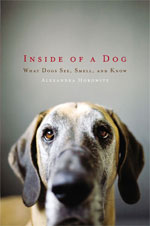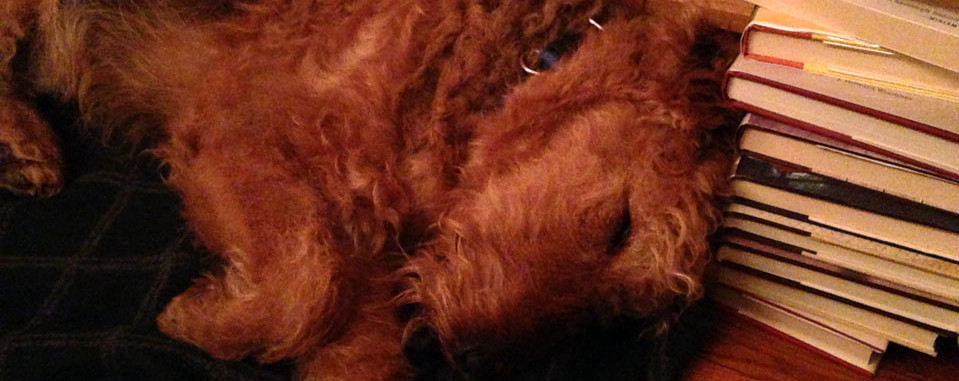
In learning to slow down to better appreciate my dogs’ perception of our shared world, Alexandra Horowitz has also taught me to slow down for my own benefit. It’s no longer too cold, I’m no longer too tired, I’m no longer in a roaring hurry to get home to watch the “At Issue” panel (and probably raise my blood pressure anyhow), if my dogs need to take measure of the world through their own gauges, via some good, long, ruminative sniffs.
In its absorbing and entertaining examination of the unique human-canine bond, Horowitz’s Inside of a Dog charmingly balances the scholarly and scientific with the personal and whimsical. This is one of my favourite explorations of how dogs and people can so effectively, happily and affectionately co-exist.
Human and animal cognition expert Horowitz spells out in down to earth fashion a practical and enlightening approach to optimally and respectfully sharing our lives with another species. Her science/technical examination of differences between wild and domesticated species and their perceptions of their lives and the lives of those with whom they share their existence is accessible without feeling oversimplified or condescending. She couples it with a sweet, wistful personal recounting of the dogs in her life, which serves to illustrate and underpin the scientific themes without ever feeling forced or cloying.
Horowitz tackles concepts that are certainly thought provoking for dog owners and lovers, but I’m guessing (because I can’t be other than a dog lover) are also instructive to other animal lovers or others just interested in our relationship to the species with whom our paths cross. Most elucidating is the discussion about umwelt as distinct from the dangers of anthromorphizing, where we attribute human characteristics and reactions to animal behaviour, and allow that interpretation to inform how we train, interact with and attempt to understand our pets. Umwelt, on the other hand, accounts for different creatures with different physiology, sensibilities, experiences and more processing and reacting to the same environment in very divergent ways.
Umwelt is an important concept in The Tiger, the acclaimed non-fiction bestseller by John Vaillant. Vaillant uses the concept to pointedly avoid characterizing the behaviours of the tiger in the story as having human motivations, such as the urge for revenge, and weaves that appreciation of different interpretations of the same world and circumstances into a compelling tale and environmental paean.
Horowitz dials down the application of umwelt to the small, the domestic, the practical, but still with a profundity surprisingly comparable to Vaillant’s.
The parcel of scientific facts we have collected allows us to take an informed imaginative leap inside of a dog – to see what it is like to be a dog; what the world is like from a dog’s point of view.
We have already seen that it is smelly; that it is well peopled with people. On further consideration, we can add: it is close to the ground; it is lickable. It either fits in the mouth or it doesn’t. It is in the moment. It is full of details, fleeting, and fast. It is written all over their faces. It is probably nothing like what it is like to be us.
Horowitz literally illustrates how warmly approachable Inside of a Dog is. While making notes of scientific observations of dog behaviour, she was often inclined to doodle and the results depicted her subjects. She incorporates many of those whimsical line drawings throughout the book, forging a heartwarming connection with every reader and fellow dog lover.

See also:
-
Conflicting Gestures of Affection
Hugs have the opposite meaning to dogs
